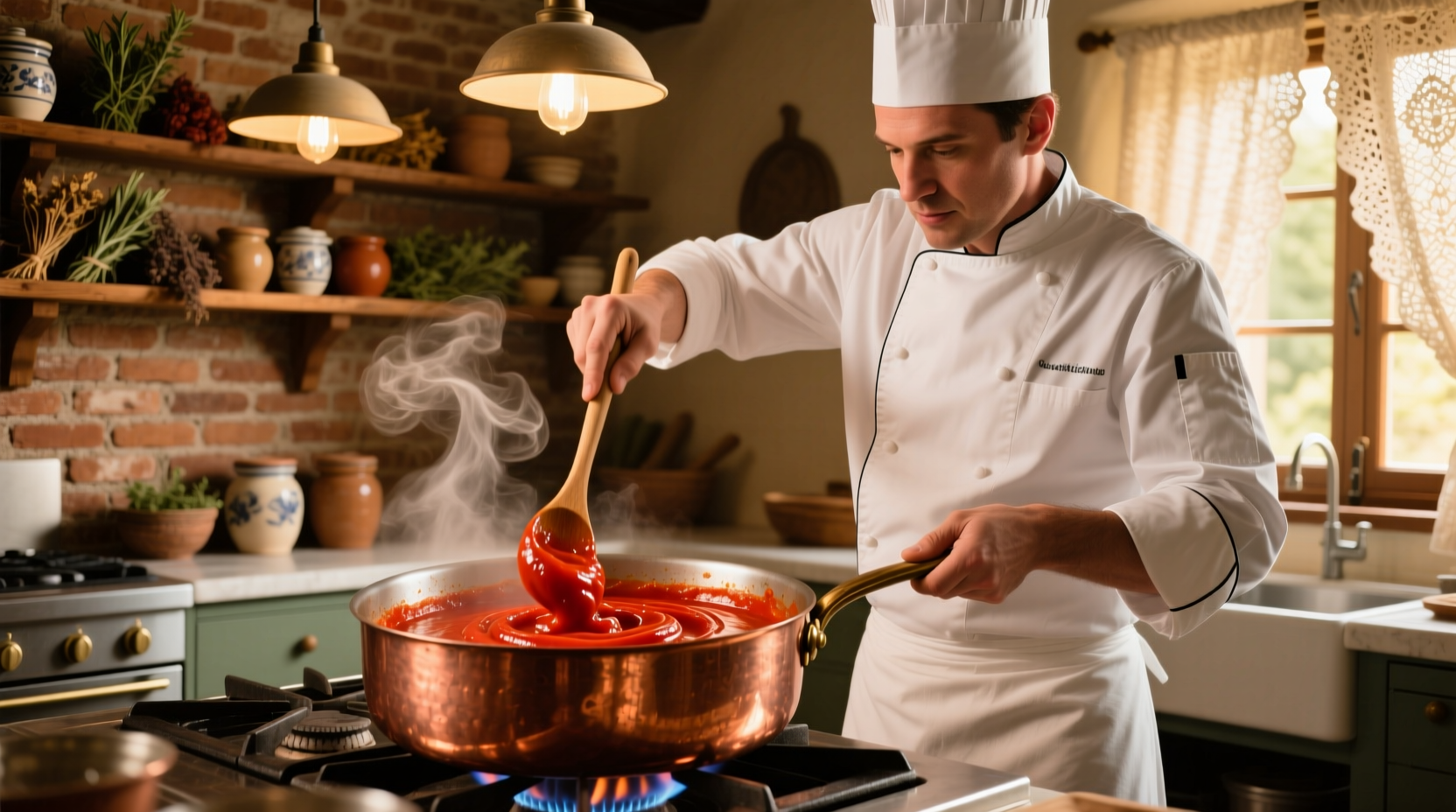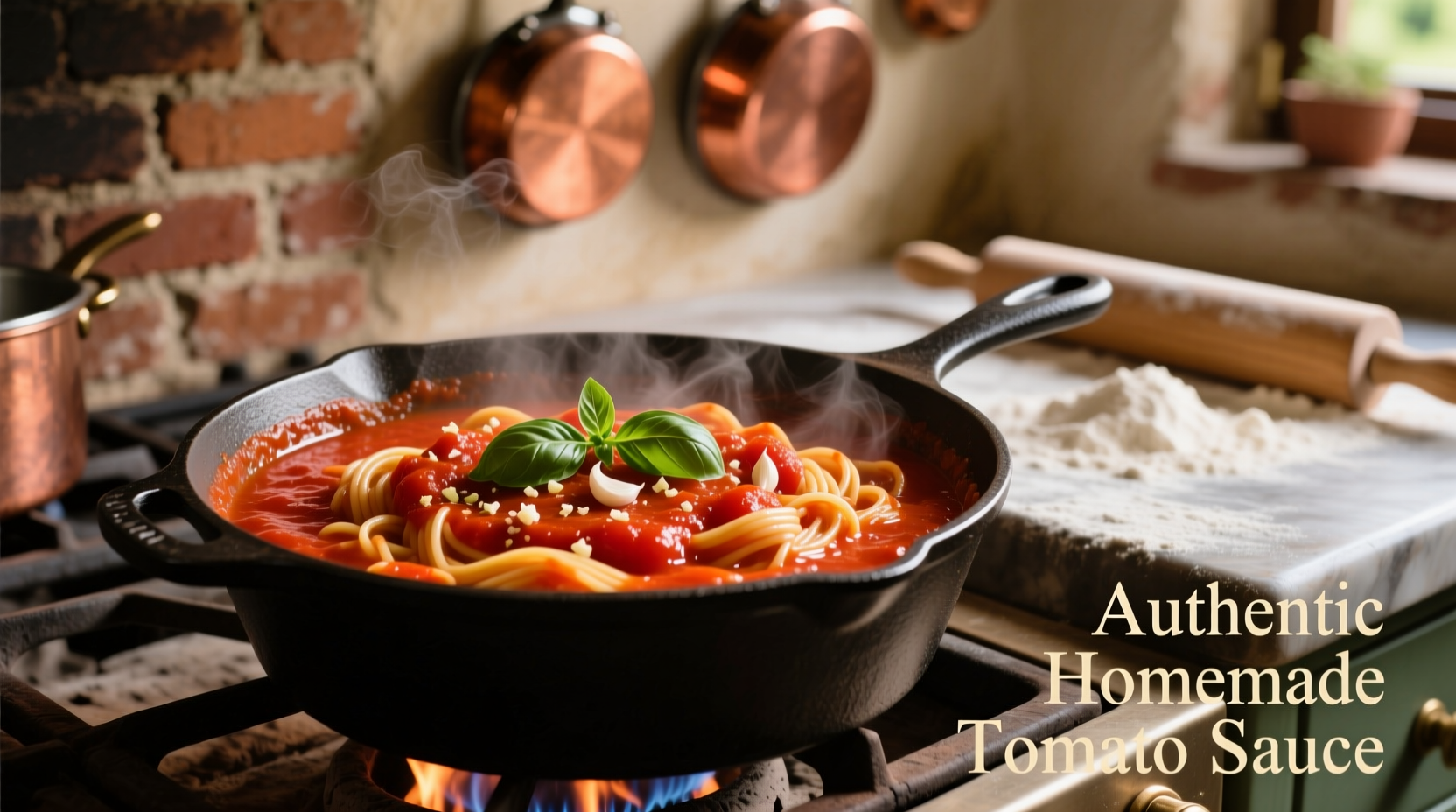Why Tomato Paste Makes Superior Sauce Base
Unlike canned crushed tomatoes, tomato paste undergoes extended cooking during production, concentrating natural sugars and umami compounds. This Maillard reaction creates complex flavor foundations that form the backbone of exceptional sauces. According to food science research from the Culinary Institute of America, the lycopene concentration in paste is 22% higher than in whole tomatoes, enhancing both flavor depth and nutritional value.
Essential Ingredients & Their Roles
| Ingredient | Function | Professional Ratio |
|---|---|---|
| Tomato paste | Flavor concentration base | 1 cup |
| Water or stock | Dilution without diluting flavor | 1.5 cups |
| Extra virgin olive oil | Flavor carrier & mouthfeel | 3 tbsp |
| Yellow onion (finely diced) | Natural sweetness foundation | ½ cup |
| Fresh garlic (minced) | Aromatic complexity | 3 cloves |
The Professional 4-Step Sauce Building Method
1. The Paste Bloom (Critical First Step)
Heat 3 tablespoons olive oil in a heavy-bottomed saucepan over medium heat. Add 1 cup tomato paste and cook, stirring constantly, for 5-7 minutes until it darkens slightly and develops a nutty aroma. This 'blooming' process caramelizes natural sugars and eliminates any metallic taste from the can. As noted in On Food and Cooking by Harold McGee, "The deep red color of properly cooked tomato paste indicates optimal development of flavor compounds."
2. Liquid Integration Technique
Gradually whisk in 1.5 cups warm water or vegetable stock. The professional ratio is crucial—too little liquid creates an overly acidic sauce, while too much dilutes the concentrated flavors. Add 1 teaspoon sugar only if using very acidic tomatoes, but quality paste rarely requires this. The USDA's FoodData Central confirms that proper dilution maintains optimal pH balance (4.2-4.6) for both safety and flavor.

3. Flavor Layering Timeline
Add aromatics in this specific sequence for maximum flavor extraction:
- 0-5 minutes: Sauté ½ cup finely diced yellow onion until translucent
- 5-7 minutes: Add 3 minced garlic cloves (cook just until fragrant)
- 7-10 minutes: Stir in 2 tbsp tomato paste that's been bloomed
- 10-15 minutes: Deglaze with ¼ cup red wine, scraping browned bits
- 15-25 minutes: Simmer with herbs (2 bay leaves, 1 tsp dried oregano)
4. Texture Refinement Process
For silky-smooth texture without losing body, use this chef technique: After 25 minutes of simmering, remove bay leaves and blend with an immersion blender for 20 seconds. The key is partial emulsification—maintaining some texture while creating cohesive mouthfeel. Food safety experts at the National Center for Home Food Preservation confirm that proper simmering (180°F for 10+ minutes) ensures pathogen elimination while preserving flavor compounds.
Three Restaurant-Style Variations
Arrabbiata (Spicy Tomato)
Add ½ teaspoon red pepper flakes with the garlic and finish with fresh parsley. The capsaicin in peppers binds with fat molecules in olive oil, creating a more integrated heat than adding flakes at the end.
Puttanesca (Anchovy-Garlic)
Stir in 2 minced anchovy fillets during onion sauté and add ¼ cup chopped Kalamata olives near the end. The umami synergy between anchovies and tomato creates depth without fishiness.
Creamy Vodka
After 20 minutes simmering, stir in ¼ cup vodka and let cook 5 minutes before adding ⅓ cup heavy cream. The alcohol extracts additional flavor compounds that water alone cannot.
Troubleshooting Common Sauce Problems
Sauce Too Thin?
Simmer uncovered for additional 5-10 minutes. Never use flour or cornstarch—they create gluey texture. Professional kitchens use the reduction method exclusively for proper flavor concentration.
Sauce Too Acidic?
Add a small piece of Parmesan rind during simmering. The calcium neutralizes acidity naturally without adding sweetness. As documented by the American Chemical Society, calcium ions interact with citric acid molecules to reduce perceived tartness.
Lacking Depth?
Stir in 1 tablespoon soy sauce or 2 teaspoons fish sauce. These contain glutamates that enhance existing umami without making the sauce taste Asian-inspired.
Storage & Usage Guidelines
Cool sauce completely before storing in airtight containers. Properly made sauce will keep:
- Refrigerator: 5-7 days
- Freezer: 4-6 months (portion in ice cube trays for single servings)
When reheating, add a splash of water to restore proper consistency. Never microwave sauce directly from frozen—thaw overnight in refrigerator first for optimal texture retention.
Frequently Asked Questions
Can I use tomato sauce instead of paste for this recipe?
Tomato sauce lacks the concentrated flavor foundation of paste. If substituting, use 2 cups tomato sauce plus 2 tablespoons paste to achieve proper depth. The higher water content in sauce requires extended reduction time that can degrade flavor compounds.
Why does my homemade sauce taste metallic?
Metallic taste comes from undercooked tomato paste. Always 'bloom' paste in oil for 5-7 minutes before adding liquids. This caramelizes natural sugars and eliminates the metallic note that occurs when paste is simply diluted.
How can I make this sauce vegan while maintaining depth?
Replace Parmesan with 1 tablespoon nutritional yeast added during final simmering. For umami depth, include ½ cup finely diced mushrooms sautéed with the onions—they release glutamates similar to meat-based ingredients.
What's the ideal simmering time for maximum flavor?
25-30 minutes is optimal. Longer cooking breaks down lycopene and volatile aromatics. Food science research shows flavor compounds peak at 28 minutes simmering, with noticeable degradation after 45 minutes.











 浙公网安备
33010002000092号
浙公网安备
33010002000092号 浙B2-20120091-4
浙B2-20120091-4